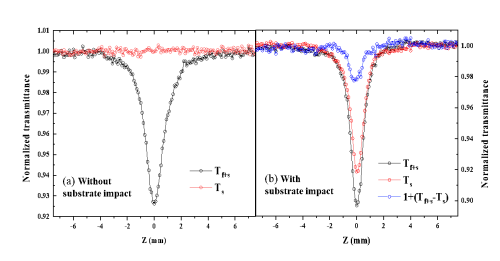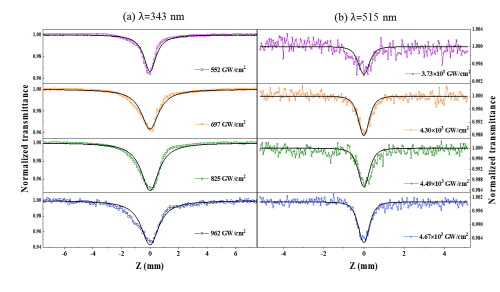Recently, researchers from the Thin Film Optics Laboratory of the Shanghai Institute of Optics and Fine Mechanics (SIOM), Chinese Academy of Sciences (CAS) has made progress in the measurement of nonlinear absorption coefficients of wide-bandgap oxide thin films. The nonlinear absorption coefficients of common HfO2, Al2O3, and SiO2 thin-film materials were obtained by suppressing the nonlinear response of the substrate. Related results were published in the Optical Materials Express on Jan 13, 2022.
With the construction of 100 PW laser in China and the development of EW-level peak power laser, the extremely weak nonlinear optical response of wide-bandgap thin film materials will affect the laser output performance. In the researchers’ study, a highly sensitive method to measure the nonlinear absorption of such thin films was proposed by choosing an ultra-thin and ultra-low nonlinear response material as the substrate.
Researchers analyzed the influence of nonlinear response of substrate material and thickness on that of thin film and selected 50 μm MgF2 and quartz glass as the substrate for coating. The nonlinear intensity of substrate is suppressed to at least 80% of the whole element or can even be ignored so that the normalized transmittance of the thin film can be obtained effectively. This makes two-photon and three-photon absorption coefficients of HfO2, Al2O3, and SiO2 thin-film materials extracted successfully.
The accurate nonlinear absorption response measurements of wide bandgap oxide thin films provide practical guidance for the design and fabrication of ultra-high peak power laser thin films.

Figure 1. The situation (a) without substrate impact; (b) with substrate impact, the nonlinear absorption signal of the thin film can be extracted by the process of 1+ (Tf+s-Ts). (Image by SIOM)

Figure 2. Normalized transmittance and fitting curves of Al2O3 films under laser irradiation at different wavelengths (a) λ=343 nm; (b) λ=515 nm. (Image by SIOM)

Table 1. Experimental results of two-photon and three-photon absorption coefficients of HfO2, Al2O3 and SiO2 thin films and bulk materials. (Image by SIOM)
Article website:
https://doi.org/10.1364/OME.447678
Contact:
WU Xiufeng
General Administrative Office
Shanghai Institute of Optics and Fine Mechanics, CAS
Email: xfwu@siom.ac.cn
Web: http://english.siom.cas.cn/